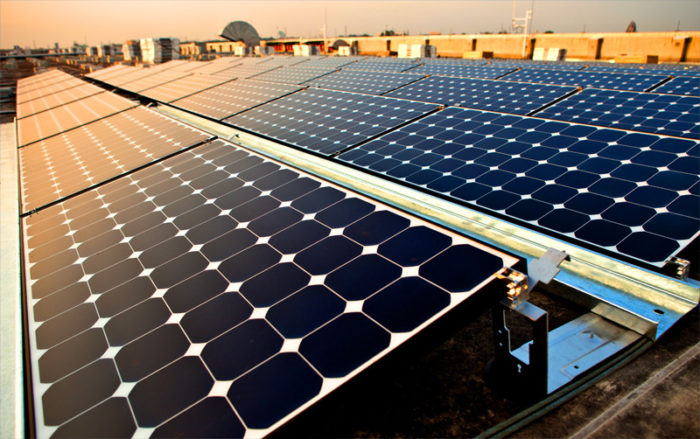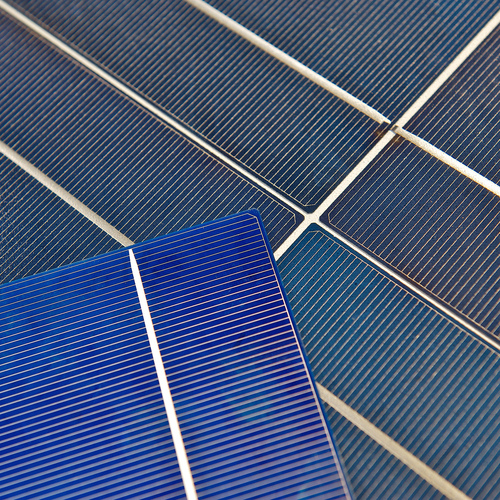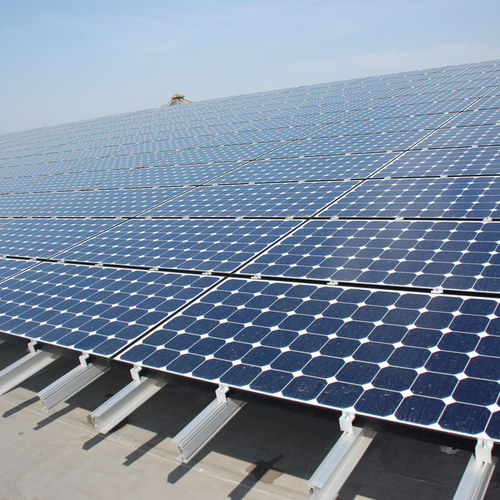
Image Credit: Intel / CC BY 2.0 / Flickr
Just six months ago there were plenty of inexpensive solar panels to be had, but solar developers now report a dwindling supply and higher prices as the market reacts to the possibility of new U.S. tariffs on imported photovoltaic (PV) modules.
A petition filed earlier this year by bankrupt Suniva asked the International Trade Commission to impose a new tariff on solar cells and to set a minimum price on PV modules. That set off a run on solar panels that has driven up costs by about 40% in the last four months and made some projects uneconomical, Bloomberg reported.
“We’ve had roughly $500 million worth of work that we’ve had to put on hold,” Scott Canada, who oversees renewable energy projects for McCarthy Building Cos. of St. Louis, told Bloomberg. “The supply of panels has just evaporated as everybody is grabbing what they can.”
The ITC conducted hearings on the petition last month. The Solar Energy Industries Association, a trade group, and a number of others oppose higher tariffs and warn they would mean the loss of tens of thousands of jobs in the U.S. and make solar panels much more expensive.
Asian countries, including China, dominate a solar market that has seen a decline in global prices of more than 50% over five years. Suniva and co-petitioner SolarWorld Americas argued that the trend is devastating U.S. based manufacturers, which now account for only about 11% of the market.
Soft costs — such as marketing and permitting — account for most of the cost of new residential solar installations, but even small increases in the price of panels can make some projects untenable. Panels were selling for about 32 cents per watt in the U.S. before Suniva filed its complaint, but prices have since risen to as much as 45 cents per watt, Bloomberg said.
Plans to double China’s solar capacity over the next three years also have contributed to the shortage, but analysts expect the scarcity to ease and for prices to stabilize once the Suniva case is settled. The ITC is expected to send its recommendation for tariffs to the White House later this month.
Separately, Reuters reports that the cost of utility-scale solar energy in the U.S. has fallen to 6 cents per kilowatt hour, reaching a government target three years ahead of schedule.
The Department of Energy’s SunShot Initiative was established in 2011 and hoped to push prices down to that level by 2020. At the time, solar energy cost about 28 cents per kWh. Ironically, a drop in the cost of solar panels was cited as the main reason for the price decline.
Weekly Newsletter
Get building science and energy efficiency advice, plus special offers, in your inbox.















0 Comments
Log in or create an account to post a comment.
Sign up Log in